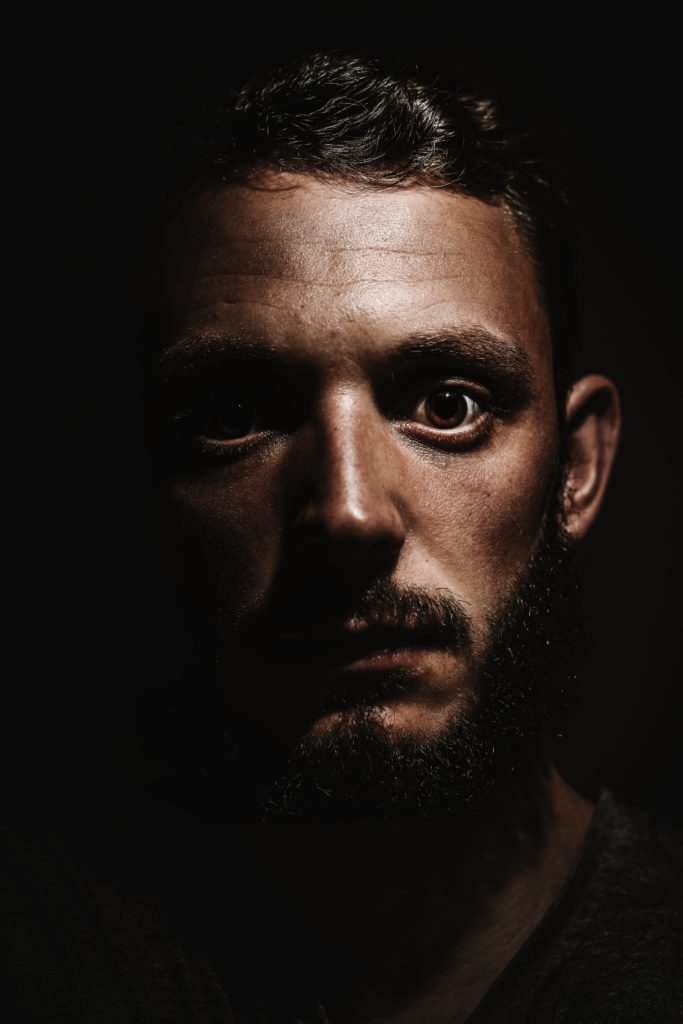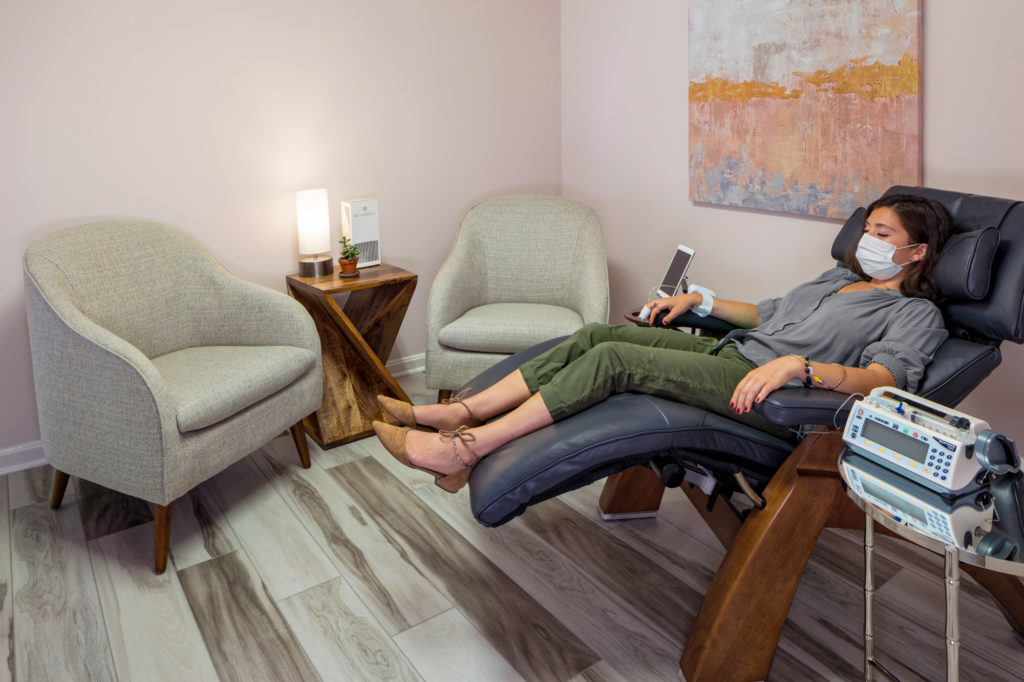
Eric woke up agitated, fighting the darkness that flooded his thoughts. He plodded to the kitchen and tried to keep the defeat and deep irritability at bay. On his good days, Eric could be a somewhat upbeat guy, and his family enjoyed his clever quips. On darker days, he tried to be upbeat but it came across pretty sinister and critical. Eric was diagnosed with bipolar I disorder a few years ago. The parade of medications his doctor prescribed didn’t help him like they seemed to help others. His brain was miserable. It actually stung and itched at times…at least it felt that way. Was it possible to have inflammation in his brain…?
Frankly, Eric was “white knuckling it”… basically doing the best he could.
Because when medicine doesn’t work, you have to use all your strength and your will to hold yourself in control.
His muscles were stiff and clenching, almost involuntarily. At least, he couldn’t tell that he was flexing them. He didn’t know how to describe it, but he sometimes felt his mind and body had called a meeting without inviting him to attend.
As hard as he tried to control himself, sometimes he just couldn’t. His self respect was shot from the life he’d lived, the mistakes he’d made, and the scenes he’d made when his symptoms overwhelmed him. Inflammation in the brain, combined with other bipolar symptoms make it really difficult to live without shame. Especially when medications don’t work.
To make matters worse, the inflammation led to motivational anhedonia — and it was just too hard to care about things he needed to do, or to find energy to exert on those things.
Anhedonia is when your ability to experience pleasure or interest in previously rewarding activities falls away — often dramatically. It’s common for people with psychiatric disorders to experience their motivation drop off. Pleasure and motivation are vital components in living to fulfill goals, and without those, you lack the reward that comes with fulfilling goals…which results in dysfunction.
Was he a monster? No, of course not. The myth of people with bipolar disorder acting like “monsters” is just that. A myth perpetrated by unthinking and uninformed people, devoid of understanding. Eric knew he was soft-hearted, kind to children and pets. Those who knew him best knew his kind heart. And they offered their best support when symptoms loomed too heavy and overwhelming to control. He had friends who said he was the best friend they’d ever had. That was probably because he understood their struggles.

But…why did the medicines not help him when they helped others? Eric and his family didn’t know. But they never gave up hope that a medicine or treatment would be found to make his life endurable.
As the hours droned on, his agitation seemed to be getting worse. It was so hard to remember that his feelings of agitation were symptoms, and not a natural reaction to frustration. Those symptoms felt like real life experiences.
Because they were his real life.
Honestly? It was hard to hold a job because these feelings would invade as he waited tables, and as hard as he tried to cope with the frustration in his job, he’d finally melt down and walk out. Or just as bad, the motivational anhedonia would blanket him and he’d be too shut down to go to work at all.
And then, sometimes his face felt like it was on fire.
On a bad day, he would squeeze his eyes shut, and hold his head in his hands, groaning, “I have fire ants on my brain.” Inflammation in the brain is misery. Of course, this was his own personal metaphor. There were no insects. It was a sensation that occurred. This miserable symptom occurred periodically and was a sign his family recognized as an alert he was about to escalate. When Eric escalated, that might mean he would shout a string of expletives, or roar as he hurled his Coke at the wall.
He didn’t know why this happened, but it was one of a variety of symptoms that made his condition so hard to live with. His family saw it…upfront and personal. (They knew they’d never experienced what he described.) And they respected him for what he endured. It was awful.
When people heard he had bipolar disorder, they would say things like, ”Oh, you have mood swings.” They had no idea what that was like. Unpredictable misery. It had little to do with the “swing” and so much to do with the inflamed misery.

Roger McIntyre, MD, FRCPC, of the University of Toronto and the University Health Network spoke on inflammation in people with mood disorders at a conference last November.
In addition, Dr. McIntyre will be speaking at Ketamine2022 the Ketamine and Related Compounds Conference in Oxford, U.K. on April 4-6.
He pointed out that there is a high prevalence of inflammation in individuals with mood disorders, like depression and bipolar disorder.
He said that 25-30% of people with major depressive disorder or bipolar disorder have a CRP (C-reactive protein) level higher than 3mg/l.
That means they’re at risk for cardiovascular disease, for example, because of inflammation.
Dr. McIntyre made the point that individuals with bipolar disorder or major depressive disorder are at higher risk to contract, be hospitalized, and even die from COVID-19.
Plus, one third of outpatients with COVID-19 (and half of inpatients with COVID-19) develop a neurologic or psychiatric disorder.
Think about that for a moment. One out of three people you know who’ve had COVID will develop a psychiatric or neurologic disorder.
We’ve got a big crisis looming.
He found that some causes of inflammation in mood disorders include genetics and environmental factors like poverty, cigarette smoke, diet, sleep disturbance, obesity, trauma, and …loneliness.
Yes, even loneliness.
You may have noticed how isolating mood disorders can be. And all that isolation can produce loneliness, which sets you up for inflammation.
Dr. McIntyre recommends ways of treating inflammation like a Mediterranean diet (lots of flavonoids there!), exercise, stronger social ties, and more restful sleep.
Because of the connections between COVID-19 and mood disorders, it’s important to take good care of yourself and the people you love, to avoid more serious complications.
Another issue is obesity. Obesity is more common in people with psychiatric disorders than in other groups.
Obesity and mood disorders are a dangerous combination, especially when combined with COVID-19.
There’s something to be said for throwing out our old view of psychiatric illness, and looking at it through a new pair of lenses.
At Innovative Psychiatry, we have deep and broad expertise in treating bipolar depression and major depressive disorder. And we know the complications COVID and obesity contribute.
We encourage you to take advantage of our ketamine treatment program. Ketamine isn’t magic (and it doesn’t work for everyone), but in our practice, it has been transformative for so many.

When you come for treatment, you’ll be led to a private infusion room where you’ll be carefully monitored. We’re meticulous about keeping our air free of bacteria, viruses (like COVID-19), and molds using plasma cell technology developed by NASA the Department of Defense—we were the first ketamine infusion center in the US to offer this.
When you come to us for treatment, you can rest knowing you’re safe from infection here (no matter what’s going on out there) and you can focus on just getting better.
We’re here to help you, with infusions of a remarkable medicine we use effectively for major depressive disorder, bipolar depression, PTSD, social anxiety, substance and alcohol use disorder, and suicidal thinking.
Treat the mood disorder to reduce the inflammation in the brain.
You’re not isolated and facing your symptoms alone. We’re here to help.
Give yourself the opportunity to get better.

To the restoration of your best self,
